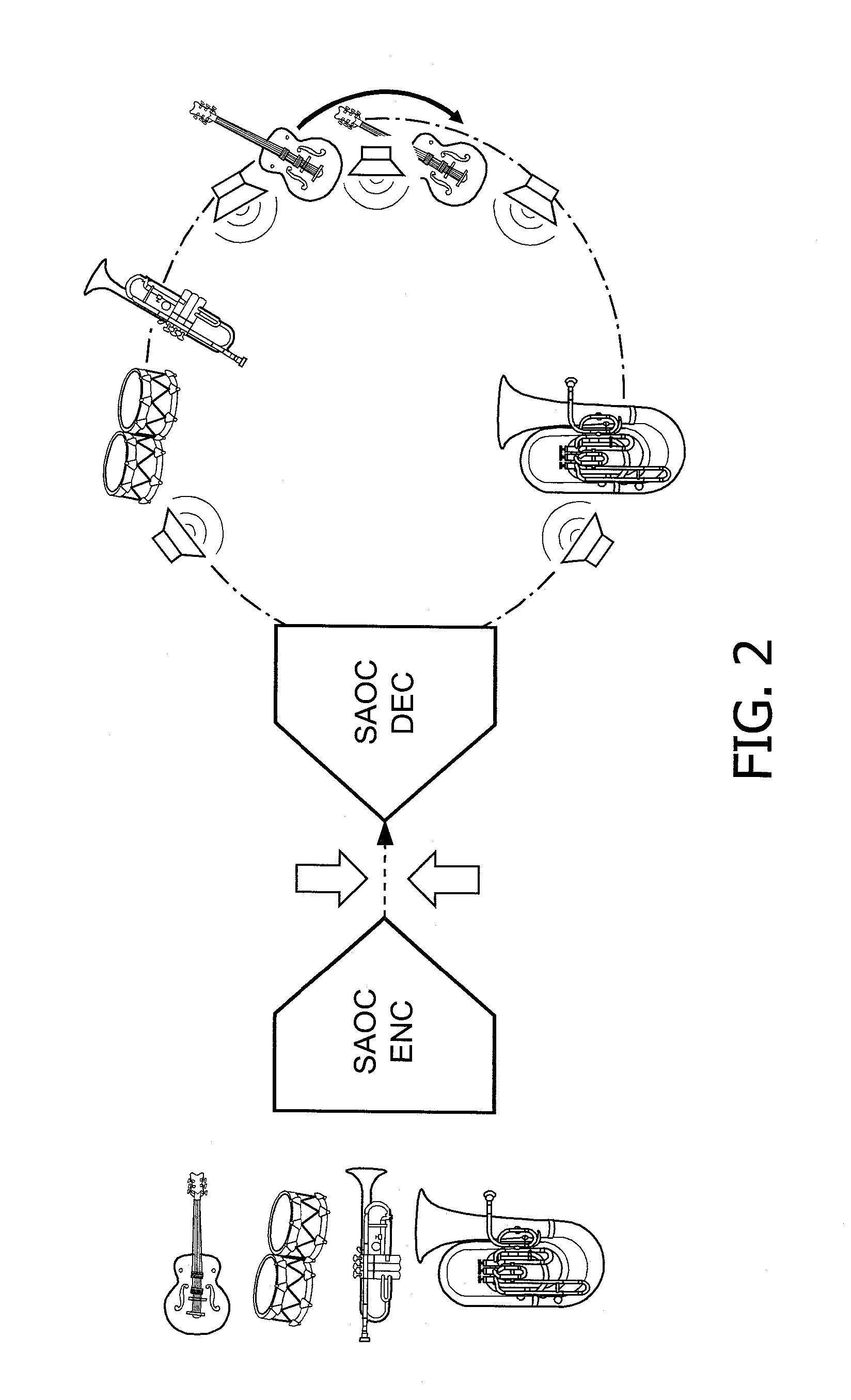An audio apparatus and method therefor
an audio apparatus and a technology of a microphone are applied in the field of audio apparatus and a method therefor, which can solve the problems of cumbersome and disadvantageous loudspeaker configurations with typically the need for a relatively large number of loudspeakers, and inconvenience perceived by consumers, so as to achieve a high degree of flexibility in rendering audio, improve performance, and improve the effect of performan
- Summary
- Abstract
- Description
- Claims
- Application Information
AI Technical Summary
Benefits of technology
Problems solved by technology
Method used
Image
Examples
Embodiment Construction
[0081]The following description focuses on embodiments of the invention applicable to a rendering system arranged to render a plurality of audio components which may be of different types, and in particular to the rendering of audio channels, audio objects and audio scene objects of an MPEG-H 3D audio stream. However, it will be appreciated that the invention is not limited to this application but may be applied to many other audio rendering systems as well as other audio streams.
[0082]The described rendering system is an adaptive rendering system capable of adapting its operation to the specific audio transducer rendering configuration used, and specifically to the specific positions of the audio transducers used in the rendering.
[0083]The majority of existing sound reproduction systems only allow a very modest amount of flexibility in the loudspeaker set-up. Due to conventional systems generally being developed with basic assumptions regarding either the general configuration of t...
PUM
 Login to View More
Login to View More Abstract
Description
Claims
Application Information
 Login to View More
Login to View More - R&D
- Intellectual Property
- Life Sciences
- Materials
- Tech Scout
- Unparalleled Data Quality
- Higher Quality Content
- 60% Fewer Hallucinations
Browse by: Latest US Patents, China's latest patents, Technical Efficacy Thesaurus, Application Domain, Technology Topic, Popular Technical Reports.
© 2025 PatSnap. All rights reserved.Legal|Privacy policy|Modern Slavery Act Transparency Statement|Sitemap|About US| Contact US: help@patsnap.com



